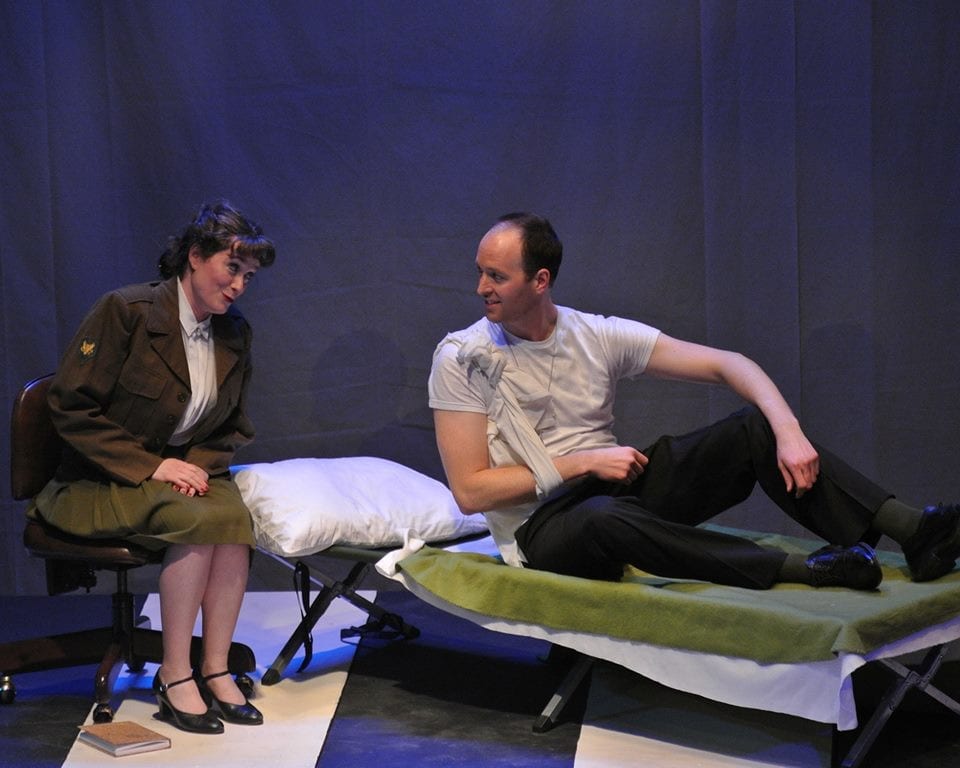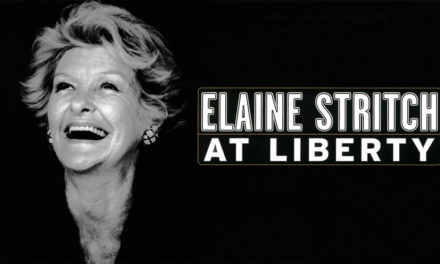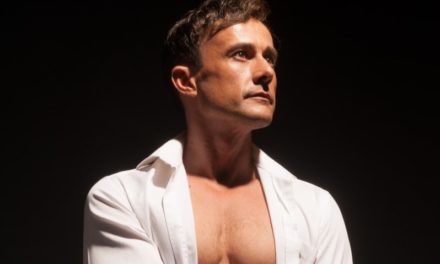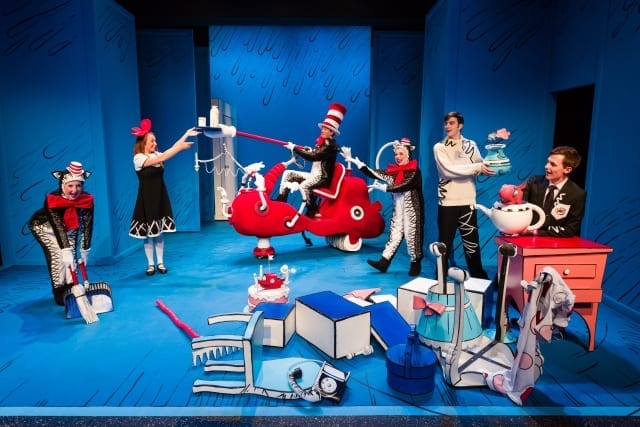SOUTH SALT LAKE — Heroes of World War II, an expository script by director and playwright Joanne Parker, offers a cursory overview of World War II tailored to and appropriate for elementary school audiences. Offering a bit of name recognition through the stories of President Franklin D. Roosevelt, Anne Frank, and Rosie the Riveter, as well as those of less famous but historically accurate characters, Heroes of World War II highlights the heroic contributions of soldiers, nurses, performers, leaders and the American, British, and German families affected by the atrocities of war. Without delving too far into the complexities or the horror, this production provides a timeline and geographical foundation in a way that can provide a memorable framework upon which students can continue to add their future understanding of this pivotal period in world history.

Show closes March 12, 2016.
As a fifth grade teacher and mother of a fifth grade student, I was particularly interested in this production. The Utah Core Standards for Social Studies present an expectation that fifth grade students should be able to understand the role of the United States in the second world war, and it was for this age group that the production seemed most appropriate. The script skillfully showcased Parker’s understanding of an elementary school vocabulary. For example, as Matthew Windham, Meighan Smith, and Jana Lynne Cox, who each played a variety of roles throughout the production, stood in front of a USO backdrop, my son leaned over and said, “Mom, what is USO?” As if in direct answer to his question, the actors launched into a quick background lesson explaining the acronym and organization. My son nodded in my direction and turned his attention back to the show, convinced he would no longer need my input in order to comprehend the content.
I also found the interactive nature of this Utah Children’s Theatre production to be ideal for its young audience. In several scenes, the actors invited audience members to the stage to experience elements of the war. Whether it was following a rope through the darkness after the bombing of Pearl Harbor or learning the Jitterbug in a shelter in London, having the children join the actors on stage not only provided a valuable educational opportunity, but also provided variety in what otherwise may have been one very long history lecture. Another element that provided this much needed variety included the projection screen used as the backdrop upon which historical videos designed by Windham occasionally punctuated the onstage dialogue. The transitions and combinations of live acting and historical context were well-executed, with actors smartly positioned to enhance rather than detract from the onscreen imagery.
 As for the acting, I was impressed to see such variety in each of the 23 personae presented by only three actors. Of Smith’s roles, I enjoyed her most when she portrayed a child or teen such as Lottie and Anne Frank. Her mannerisms transformed her believably into the youth required, and I found myself making a more genuine connection to these characters than when she portrayed an adult. Cox was best suited for the roles in which she portrayed a mother or mentor including Nurse Harriet Moore and Mother. She seemed most confident when the role asked her to give comfort or advice to the other characters on stage. The diversity required of Windham in both age and presence was staggeringly wide, especially as he was frequently backed by a photograph or video of the character he was playing. Despite his looking nothing like President Franklin D. Roosevelt or General Eisenhower, Windham’s commitment to these roles allowed me to feel inspired by the powerful historical speeches. Most impressive to me was the array of accents needed to give life to each character. Each actor convincingly donned a British and German accent as well as the specific vernacular of several United States regions.
As for the acting, I was impressed to see such variety in each of the 23 personae presented by only three actors. Of Smith’s roles, I enjoyed her most when she portrayed a child or teen such as Lottie and Anne Frank. Her mannerisms transformed her believably into the youth required, and I found myself making a more genuine connection to these characters than when she portrayed an adult. Cox was best suited for the roles in which she portrayed a mother or mentor including Nurse Harriet Moore and Mother. She seemed most confident when the role asked her to give comfort or advice to the other characters on stage. The diversity required of Windham in both age and presence was staggeringly wide, especially as he was frequently backed by a photograph or video of the character he was playing. Despite his looking nothing like President Franklin D. Roosevelt or General Eisenhower, Windham’s commitment to these roles allowed me to feel inspired by the powerful historical speeches. Most impressive to me was the array of accents needed to give life to each character. Each actor convincingly donned a British and German accent as well as the specific vernacular of several United States regions.
 Vivid costumes by Meighan Smith and Christina Wilson not only established the 1940’s time period, but also provided a separation between characters and scenes. While some transitions were as simple as the removal of a pair of suspenders or the addition of an overcoat, many required a complete change. The movement on stage and off allowed these transitions to happen without any delay to the narrative. Scene changes were handled similarly as one of the three actors added or removed pieces during expository dialogue delivered between scenes. Although effective in the story line, these moments often occurred in dim light as the actors would briefly step out of the main stage areas. Thankfully, Tom Hohl‘s lighting design suited the scenes well; it was only in the transitions that I found the lack of lighting to be a distraction. Additionally, the diction and projection of each of the three actors was impressive, and I was able to hear and understand well throughout the production without the aid of microphones. However, in the few moments when the actors would break into song, the volume dropped significantly, and I found myself wishing for an amplified sound.
Vivid costumes by Meighan Smith and Christina Wilson not only established the 1940’s time period, but also provided a separation between characters and scenes. While some transitions were as simple as the removal of a pair of suspenders or the addition of an overcoat, many required a complete change. The movement on stage and off allowed these transitions to happen without any delay to the narrative. Scene changes were handled similarly as one of the three actors added or removed pieces during expository dialogue delivered between scenes. Although effective in the story line, these moments often occurred in dim light as the actors would briefly step out of the main stage areas. Thankfully, Tom Hohl‘s lighting design suited the scenes well; it was only in the transitions that I found the lack of lighting to be a distraction. Additionally, the diction and projection of each of the three actors was impressive, and I was able to hear and understand well throughout the production without the aid of microphones. However, in the few moments when the actors would break into song, the volume dropped significantly, and I found myself wishing for an amplified sound.
As an adult in the room, I found that my attention wavered similarly as it might have if I was reading a book I had already read; the overview in Heroes of World War II was not deep enough to captivate my attention. Recognizing, however, that I was not the target audience, I discussed the production at length with my son after we left the theater. In the brief words of an eleven-year-old, he thought the show was great, he learned a lot, and he was never bored. He thought it was really impressive that they could put on a show with only three characters, and he never felt confused by what was happening on the stage. He never felt overwhelmed or scared by the content or portrayals, and he said he had a great time and that his dad and brothers should see the show. So at his recommendation and mine, take your elementary aged children to this educational presentation disguised skillfully as entertainment.





